Conference Presentations by Muammer Yaman
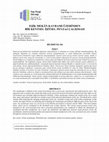
4.Ulusal Yapı Fiziği ve Çevre Kontrolü Kongresi, 2024
İşitsel peyzaj kullanıcılar tarafından algılanan, deneyimlenen ve anlaşılan ses ortamı şeklinde t... more İşitsel peyzaj kullanıcılar tarafından algılanan, deneyimlenen ve anlaşılan ses ortamı şeklinde tanımlanmaktadır. Bu yaklaşım, algılanan ses ortamını oluşturan seslerin çözümlenmesini ve ortam kullanıcıları üzerindeki etkisini öznel/nesnel yöntemlerle tespit edilmesini amaçlamaktadır. Kentsel işitsel peyzaj, kentin seslerini zaman, mekân ve hafızayı işaret etme amacıyla incelemekte ve sesleri kentin fiziksel olgusunun bir parçası olarak gözlemlemektedir. Kentin değişen ses ortamlarını çözümlerken ortaya çıkan eşik bölgeleri de kentsel işitsel peyzajın önemli bir parçasını oluşturmaktadır. Bu bağlamda çalışma, kentin farklı bölgelerinde hâkim olan işitsel peyzajın analiz edilmesine ve değerlendirilmesine odaklanmaktadır. Çalışmada Samsun kentinde bulunan İlkadım ve Atakum ilçeleri ve bu ilçelerin eşik mekânı olarak değerlendirilebilecek Ondokuz Mayıs Üniversitesi Güzel Sanatlar Kampüsü alanlarında işitsel peyzaj çalışması yapılmıştır. Araştırma alanı olarak kentin içinde süreklilik arz eden bir bölge (İlkadım-Kampüs- Atakum) seçilmiş ve kesintisiz bir alan izlenmiştir. Çalışmanın yöntemi olarak araştırma alanında mevcut ses basınç düzeyleri ölçülmüş, sembol ses bilgisi ve memnuniyetinin elde edilmesi için alan anket çalışması düzenlenmiştir. Anket çalışması aynı zamanda ses ortam kalitesinin anlamsal fark testi ile belirlenmesini ve ses ortam memnuniyetinin elde edilmesini kapsamaktadır. Sonuç olarak, çalışma alanlarındaki ses basınç düzeyleri, sembol ses, ses ortam kalitesi ve ses ortam memnuniyetleri arasındaki benzerlikler ve farklılıklar eşik mekân kavramı üzerinden ortaya konulmuştur.
The soundscape is defined as the sound environment that is perceived, experienced and understood by users. This approach aims to analyze the sounds that make up the perceived sound environment and determine their effect on the environment users through subjective/objective methods. Urban soundscape examines the sounds of the city to mark time, space and memory and observes sounds as part of the physical phenomenon of the city. Threshold zones, which emerge while analyzing the changing soundscapes of the city, constitute a major part of the urban soundscape. In this context, the paper focuses on analyzing and evaluating the soundscape prevailing in different parts of the city.In this paper, the soundscape study was carried out in the Ilkadım and Atakum in Samsun and the OMU - Fine Arts Campus areas, which can be considered as the threshold zone of these districts. The current sound pressure levels were measured in the cross-sectional area and a structured questionnaire was conducted to obtain the information of soundmark and their satisfaction. As a result, the similarities and differences between sound pressure levels, the soundmarks, sound environment quality and sound environment satisfaction in the cross-sectional area were revealed through the concept of threshold zone.
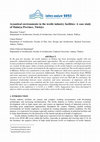
INTER-NOISE and NOISE-CON Congress and Conference Proceedings, InterNoise23, 2023
In the past few decades, the textile industry in Türkiye has been developing rapidly with raw mat... more In the past few decades, the textile industry in Türkiye has been developing rapidly with raw materials, industrialization, and employment opportunities. The use of complex machine processes in mass production methods in the textile industry, creates working conditions with high noise levels are created. In this paper, indoor acoustic performance in the textile industry was discussed and the interpretation of the acoustic environment by the employees was analyzed. The textile industry facility in Malatya, Türkiye was examined as a case study. The employees' daily noise exposure levels (LEX,8h) and sound pressure levels were measured. Additionally, Weinstein's Noise Sensitivity Scale (WNSS) and noise annoyance structured questionnaire were applied to the employees. The highest noise exposure level was 92,8 dB, and the lowest noise exposure level was 86,9 dB. In conclusion, the statistical relationship between noise sensitivity and noise annoyance of employees with the demographic properties was examined and the noise annoyances were analyzed in detail. It was found that there was a significant and positive relationship between the noise sensitivity and noise annoyance of the employees (r = 0,523, p = 0,000 < 0,05). Suggestions have been developed to improve indoor acoustic performance and reduce noise in the textile industry.
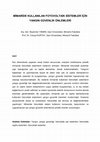
ULUSLARARASI YANGIN VE GÜVENLİK SEMPOZYUMU VE SERGİSİ TÜYAK-2019, 2019
ÖZET: Son dönemlerde yaşanan enerji krizleri sonucunda, enerjinin üretilmesine yönelik mimaride f... more ÖZET: Son dönemlerde yaşanan enerji krizleri sonucunda, enerjinin üretilmesine yönelik mimaride fotovoltaik sistemlerin kullanımı artmıştır. Mimaride fotovoltaik sistemler yapı kabuğunda çatı ve cephe elemanları olarak kullanılmaktadır. Yangının başlaması ve yayılmasında büyük bir etken olan çatı ve cephe elemanlarının fotovoltaik sistemler ile kurgulanması, yangın güvenlik önlemleri kapsamında risk olasılığı bulundurmaktadır. Bu nedenle mimaride kullanılan fotovoltaik sistemlerin yangın güvenliği risk değerlendirmesinde malzemelerin yanıcılık sınıfının bilinmesi, çatı ve cephe sistem bileşenlerinin uygun şekilde kurgulanması, iç ve dış mekân bağlantısının analiz edilmesi ve sistem içerisinde elektrik donanımının kontrol altında tutulması gerekmektedir. Bu çalışmada; mimaride çatı ve cephe elemanlarında kullanılan fotovoltaik sistemlerin yangın güvenlik önlemleri incelenmiştir. İnceleme çerçevesinde ulusal ve uluslararası mevzuatlar ele alınmış ve değerlendirmeler yapılmıştır. Mimaride fotovoltaik sistem kullanımı konusunda, tasarımcılar ve uygulamacılar için yangın güvenlik önlemlerine yönelik öneriler sunulmuştur.
ABSTRACT: As a result of energy crisis, the use of photovoltaic systems in architecture has increased for production of energy. In architecture, photovoltaic systems are used as roof and facade components in building shell. The construction of roof and facade components with photovoltaic systems, which is a major factor in the emergence and spread of fire, holds the possibility of a risk in terms of fire safety precautions. For this reason, in the fire safety risk assessment of the photovoltaic systems used in architecture, it is necessary to know the combustibility class of the materials, to construct the roof and facade system components appropriately, to analyze the internal and external connection and to keep under the control electrical equipment within the system. In this study, fire safety precautions of photovoltaic systems used in roof and facade components in architecture have been investigated. In the framework of the study, national and international regulations have been considered and evaluated. Proposals have been made for fire safety precautions of photovoltaic systems used in architecture for designers and practitioners.
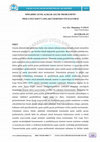
CUMHURİYET 1. ULUSLARARASI UYGULAMALI BİLİMLER KONGRESİ, 2019
ÖZET Geçmiş dönemlerden günümüze kadar olan süreçte nüfusun artmasına bağlı olarak mimarlıkta fon... more ÖZET Geçmiş dönemlerden günümüze kadar olan süreçte nüfusun artmasına bağlı olarak mimarlıkta fonksiyon şemaları ve yapı formları büyük değişimler geçirmiştir. Büyüyen kent mekânlarının, yoğun kullanıcı gereksinimlerinin ve teknolojinin bir sonucu olarak mekân sayıları çoğalmış ve mekân genişlikleri büyük oranlarda artmıştır. Mimaride mekân genişliklerinin artması, özellikle geniş açıklarının ortaya çıkmasına neden olmuştur. Mimarlar ve mühendislerin ortak bir sorunu haline gelen geniş açıklık geçme probleminin tasarım sürecine katılması ve uygun bir şekilde çözümlenmesi gerekmektedir. Çalışma kapsamında; geniş açıklık geçme probleminin mimari tasarım ve yapım sürecindeki etkisi incelenmiştir. Teknolojinin gelişmesi ve çeliğin yapı sektöründe kullanılmaya başlanması ile geçilebilecek geniş açıklık oranlarının arttığına değinilmiştir. Yirminci yüzyıl mimarlık alanında, tasarım ve yapım bilgisi ile dikkat çeken Pier Luigi Nervi (1891-1979) yapıları üzerinden inceleme yapılmıştır. Betonarme yapıları ile ön plana çıkan Nervi, özgün tasarım konfigürasyonlarını strüktürel elemanlar aracılığıyla kurgulamış, tasarım süreci çerçevesinde yenilikçi bir yaklaşım benimsemiştir. Betonarme bir sistemin yapıları üzerinde, geniş açıklık geçme problemine farklı bir tasarımla yaklaşıldığını ve mimari strüktürel gerekliliklerin özgün yatay ve düşey elemanlarla oluşturulduğu gözlemlenmiştir. İnsan ölçeği çerçevesinde ele alındığında geniş açıklık oranlarının ve mekân yüksekliklerinin büyük oranda arttığı tespit edilmiştir. Nervi'nin tasarlamış olduğu yapılarda, kullanım sınıfı gözetilmeksizin, geniş açıklık geçme problemine verilen yanıtlar incelenmiştir. Çalışmanın sonucu olarak, günümüz mimarlığında karşılaşılan geniş açıklık geçme problemlerine yönelik farklı bir yaklaşım olarak betonarme kullanımının estetik ve teknik sorunlar çerçevesinde uygun çözümler sunabildiği ortaya konulmuştur. Pier Luigi Nervi yapıları incelendiğinde betonarmenin ve prefabrikasyon üretimin tasarım sınırlarını zorladığı ve tasarımcının estetik ve strüktürel problemlerine uygun yanıtlar verebildiği gözlemlenmiştir. Tasarımcılardan geniş açıklık geçme probleminde teknolojinin kullanımı ile birlikte teknik sınırların zorlanarak estetik, güvenilir, maliyeti düşük ve hafif strüktürel yapılar ortaya çıkarması beklenmektedir. Teknoloji ve gelişmiş yapım sistemleri ile günümüz mimarisinde açıklık geçme probleminin kolaylıkla çözülebileceği bilinmelidir.
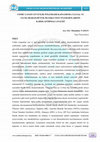
CUMHURİYET 1. ULUSLARARASI UYGULAMALI BİLİMLER KONGRESİ, 2019
ÖZET Cephe yangınları can ve mal güvenliği açısından büyük riskler oluşturmaktadır. Risklerin az... more ÖZET Cephe yangınları can ve mal güvenliği açısından büyük riskler oluşturmaktadır. Risklerin azaltılarak cephe yangın yayılımının sınırlandırılmasına yönelik bina cephelerinde çeşitli güvenlik önlemlerinin alınması gerekmektedir. Bu çerçevede; pasif ve aktif güvenlik önlemleri olarak bina cephelerinde alınması gereken yangın güvenlik önlemlerinin bilinmesi ve proje tasarım aşamasında uygulanması en temel gereklilik olmaktadır. Ulusal ve uluslararası mevzuatlar çerçevesinde belirlenen asgari koşullara uyulmalı ve mevzuatlarda belirlenen güvenlik önlemlerinin dışına çıkılmamalıdır. Son dönemlerde yaşanan cephe yangınları incelendiğinde, özellikle cephe bileşenleri arasında yanıcı malzemelerin kullanılması dikkat çekmektedir. Cephe tasarım ve yapım kurgusu için; mantolama sistemlerinde, metal kompozit malzemelerin kullanılmasında, sandviç panel sistemlerinde, ahşap ve plastik kökenli malzemelerin kullanılmasında, su, buhar ve nem kontrolü amaçlı yanıcılık sınıfı düşük malzemelerin kullanılmasında yangın faktörü önemsenmelidir. Yangının cephe sistemindeki malzemeler ve boşluklar aracılığı ile yayılarak üst noktalara taşınması yangının kontrolü açısından büyük sorun oluşturmaktadır. Yangının bina içi ve bina dışı kaynaklı olarak ortaya çıkması cephe malzemelerinin yangına tepki sınıfının bilinmesini önemli kılmaktadır. Aynı zamanda malzemelerin sistem içerisindeki yangın davranışları cephe açıklık oranları ve cephe geometrisi gibi temel girdilerle değişmekte olup performansa dayalı incelemeleri yapılmalıdır. Çalışma kapsamında; bina cephe sistemlerinin oluşturulmasında olası bir yangın anında malzeme davranışlarının belirlenmesine yönelik büyük ölçekli test standartları incelenmiştir. Ülkemiz (ISO, uluslararası), İngiltere (BS), Amerika Birleşik Devletleri (NFPA)-Amerikan Ulusal Standart Enstitüsü (ANSI), Almanya (DIN) ve İsveç (SP Fire) tarafından belirlenen büyük ölçekli test standartları ele alınmış ve karşılaştırmalı analizi yapılmıştır. Araştırma çerçevesinde, test standartlarının uygulanması ve test düzeneklerinin hazırlanmasına yönelik karşılaştırmalar yapılmıştır. Çalışmanın sonucunda, belirli bir süre yangına (belirli bir ısı değerine ve aleve) maruz kalan cephe sisteminde ortaya çıkan hasar ve yangının ulaştığı noktaların test standartlarına göre değerlendirmeleri yapılmıştır. Standartlar dahilinde ortak, benzer ve farklı özellikler ortaya konulmuştur. Ülkemizde konu çerçevesinde kabul edilen
büyük ölçekli test standardının içeriği ve uluslararası alandaki yeri açıklanarak performansa dayalı cephe yangın güvenlik önlemlerinin gerekliliğine dikkat çekilmiştir.
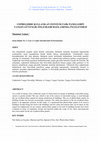
9. ULUSAL ÇATI & CEPHE KONFERANSI, 2018
ÖZET Son dönemlerde yaşanan enerji krizleri sonucunda, binalarda enerjinin korunumu k... more ÖZET Son dönemlerde yaşanan enerji krizleri sonucunda, binalarda enerjinin korunumu kapsamında yenilenebilir enerji kaynaklarına büyük ölçüde ihtiyaç duyulmaktadır. Yenilenebilir enerji kaynaklarından biri olan güneşin, binalarda enerji üretiminde kullanılması fotovoltaik paneller aracılığı ile olmaktadır. Fotovoltaik panellerin bina cephelerinde kullanımı gittikçe yaygınlaşmıştır. Cephelerde fotovoltaik panellerin kullanılmasında yangın güvenlik önlemleri önemli bir kriterdir. Bu çalışmada; cephelerde kullanılacak olan fotovoltaik panellerin binaya yangın yükü getirmesi ve bu hususta alınabilecek yangın güvenlik önlemleri üzerinde durulmuştur. Ülkemizde bina cephelerinde kullanılacak olan fotovoltaik panellerin yangın güvenliği kapsamında; yönetmelik, tasarım ve malzeme açısından değerlendirilmesi yapılmış ve fotovoltaik panellerin ülkemizde kullanımına dair öneriler getirilmiştir.
ABSTRACT As a result of energy crisis; within the scope of conservation of energy in buildings, renewable energy sources is greatly needed. The sun, which is one of the sources of renewable energy, is used through the use of photovoltaic panels for energy production in buildings. The use of photovoltaic panels on building facades has become increasingly common. Fire safety precautions in the use of photovoltaic panels is an important criterion. In this study; it is mentioned that photovoltaic panels to be used in buildings facades bring fire load to the buildings and fire safety precautions that can be taken on this regard are emphasized. In our country, photovoltaic panels to be used on building facades have been evaluated in terms of regulation, design and material within the scope of fire safety and proposals have been made for the use of photovoltaic panels.
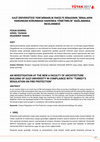
ULUSLARARASI YANGIN VE GÜVENLİK SEMPOZYUMU VE SERGİSİ TÜYAK-2017, 2017
ÖZET Ülkemizde binalarda, çeşitli sebeplerle ortaya çıkan yangınlar nedeniyle çok fazla can ve ma... more ÖZET Ülkemizde binalarda, çeşitli sebeplerle ortaya çıkan yangınlar nedeniyle çok fazla can ve mal kaybı yaşanmaktadır. Oluşabilecek can ve mal kayıplarını en aza indirmek için, binalar ulusal yangın yönetmeliğine uygun hale getirilerek, binalarda yangın güvenliği sağlanmalıdır. Uygulanması gereken güvenlik önlemleri proje tasarım aşamasında iken oluşturulmalı ve bu bağlamda projeler geliştirilmelidir. Bu amaçla ülkemizde tasarım aşamasında olan Gazi Üniversitesi yeni Mimarlık Fakültesi Binası; ulusal yangın yönetmeliğimiz kuralları çerçevesinde incelenmiş ve yapılan değerlendirmeler sonucunda binanın yönetmeliğe uygunluk kriterleri belirlenmiştir. Bu kriterler neticesinde geliştirilen öneriler ile tasarım projesi halindeki bina; yönetmelik kurallarına uygun hale getirilmiştir.
ABSTRACT: In our country, there is so much loss of life and property due to fires occurring in buildings for various reasons. To minimize loss of life and property that may occur, buildings should be harmonized with the national fire regulations, fire safety in buildings must be provided. Security measures to be applied should be created at the project design stage and projects should be developed in accordance. For this purpose, new Faculty of Architecture Building of Gazi University which is in the design stage was examined in terms of national fire regulations for rules and an eligibility criteria was developed based on the evaluations. The recommendations developed out of this study and the design project were brought in compliance with building regulations.
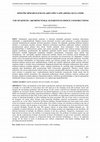
II. INTERNATIONAL ACADEMIC RESEARCH CONGRESS, 2017
ÖZET: Günümüzde yapım-üretim, malzeme ve teknoloji alanındaki gelişmeler insanların ihtiyaçlarını... more ÖZET: Günümüzde yapım-üretim, malzeme ve teknoloji alanındaki gelişmeler insanların ihtiyaçlarını etkilemekte ve değiştirmektedir. Değişen sosyal, ekonomik çevrelere ayak uyduracak ve gelişen teknolojiyi tasarımla bütünleştirecek mekânlar üretmek kaçınılmaz olmuştur. Bu bağlamda yapılardan beklenen kullanıcı istekleri ve performans koşulları artmıştır. Beklenen performans koşullarını sağlayarak, kullanıcı isteklerini gerçekleştirecek güncel gelişme alanı olarak 'kinetik mimarlık' önem kazanmıştır. Ticari faaliyetlerin gerçekleştirildiği ve kullanıcılarının günün çoğu saatini geçirdiği ortamlar olan ofislerin gelişen teknolojiler ışığında tasarlanması gerekmektedir. Bu bağlamda çalışmada kinetik mimari elemanların ofis yapılarında fonksiyonel esneklik bağlamında kullanılma olanakları araştırılmıştır. Çalışmanın amacı kinetik bina elemanlarının 'ofis' işlevindeki yapılarda fonksiyonel esneklik, fiziksel çevre denetimi, görsel dönüşüm gibi amaçlarla kullanılarak ileriki dönemlerde yapılacak ofis tasarımları için tasarımcılara veri sağlamaktır. Yöntem olarak seçilen ofis planlarında kinetik sistemlerin kullanımı bağlamında prensip tasarımlar yapılmıştır. Öncelikle kinetik sistemler bulundukları yer bakımından, kinetik yapı elemanı çeşidine göre, hareket biçimine göre ve hareketin kullanım amacına göre sınıflandırılmıştır. Kabuk dışı esneklik sağlayacak şekilde prensip tasarımlar yapılarak olanak ve kısıtları ortaya konulmuştur. Bulgularda kinetik bina elemanları kullanımının olum yanları; mekânsal kullanım esnekliği sağlaması, ısıtma-soğutma giderlerinin bu esnekliğe bağlı ayarlanabilmesi, gün ışığından etkin faydalanma, kütle geometrisinde farklı varyasyonlar sağlamasıdır. Olumsuz olarak; bakım maliyetleri, ilk yatırım maliyetlerinin yüksek olması, tasarıma sonradan dâhil edilememesi, yağmur ve kara karşı tecrit sorunları ve günümüz imar-vergilendirmenin kinetik hareketlere uymamasıdır. Sonuç olarak; tüm bu kısıtlara rağmen kinetik elemanların ofis yapılarında kullanımının olumlu yanlarının olumsuz yanlarına ağır bastığını, mekânsal esneklik sağlaması bakımından kullanıcı isteklerini gerçekleştirdiğini ve tüm bu gelişmelerin önümüzdeki dönem tasarımlara ve tasarımcılara veri sağlayacağı öngörülmektedir. Anahtar sözcükler: kinetik mimarlık, işlevsel esneklik, ofis yapıları.
ABSTRACT: Today, developments in the fields of production, materials and technology are affecting the needs of people. It is inevitable to create places that will stand up to the changing social and economic circles and integrate the developing technology with the design. In this context, expected user demands and performance conditions are increased. 'Kinetic architecture' has gained importance as an area of current development that will fulfill user demands by providing expected performance conditions. Offices that have commercial activities and where users spend most of their time. In this context, the possibility of using kinetic architectural elements in the context of functional flexibility in office buildings has been researched. The aim of the work is to provide data for designers for future office designs using functional flexibility, physical environmental control, visual conversion, etc. in the 'office' function of the kinetics building. Principle designs have been made in the context of the use of kinetic systems in selected office plans. First, kinetic systems are classified according to the type of movement, location, and the purpose of movement. The principles and designs have been put forward in order to provide flexibility beyond the bark. The positive aspects of using kinetic building elements are ; the availability of spatial utilization, the ability to adjust the heating-cooling costs depending on this flexibility, the efficient utilization of daylight, the different variations in the mass geometry. Negatively; maintenance costs, high initial investment costs, the inability to incorporate design later, the problems of isolation against rain and snow, and the contradiction of kinetic movements of today's development. In spite of the constraints, utilization of kinetic architectural elements in architectural design and structural technologies is seen as an important change for the future in terms of producing new stylistic compositions with kinetic building design and providing functional flexibility.
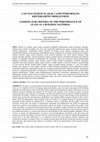
II. INTERNATIONAL ACADEMIC RESEARCH CONGRESS, 2017
ÖZET: Mimari bir eleman olarak camın; geçmişten günümüze kullanımında büyük ilerlemeler olmuştur.... more ÖZET: Mimari bir eleman olarak camın; geçmişten günümüze kullanımında büyük ilerlemeler olmuştur. Gelişen inşaat sektörü ile birlikte cam, hem yapı malzemeleri alanında hem yapım sistemleri alanında büyük ilerleme kaydetmiştir. Günümüzde yüksek teknoloji ile birlikte camın niteliği sorgulanmış, farklı yapı çözümlerinde kullanımı ortaya çıkmıştır. Bu bağlamda mimari anlamda cam seçiminde çok fazla kriter oluşmuş, kullanıcı profiline uygun konfor koşullarını yerine getirmesi beklenen cam seçimi önemli olmuştur. Proje tasarım sürecinde mimarlar, tasarım kararlarını verirken camdan beklenen performans kriterlerini tam anlamıyla bilmeli; bu bağlamda çözümler üretebilmelidir. Bu çalışmada; camın yapı malzemesi olarak kullanımından beklenen performans kriterleri ortaya konmuş, güncel çözüm önerileri aktarılmıştır. Literatür araştırması yapılarak camın statik dayanım niteliği, yapım, montaj ve tadilat niteliği, ısı kontrolü niteliği, su geçirimsizliği ve nem kontrolü niteliği, akustik konfor niteliği, yangın güvenliği niteliği, genleşme ve yatay yük etkileri niteliği, ışık, yansıma ve renk niteliği, temizlik ve bakım niteliği incelenmiştir. Camın performans kriterleri sonucunda mimari proje kapsamında uygun cam seçiminin gerçekleşmesinde beklenen nitelikler saptanmıştır. Tasarım ve uygulama projelerinde cam kullanımı ve kullanılacak camın seçimi hakkında belirli parametrelerde öneriler geliştirilmiştir. Mimari camın kullanılmasında, performans kriterlerinin saptanmaması, tam olarak bilinmemesi birtakım fiziksel konfor koşullarını bozacak olup, mimari proje tasarımcılarına büyük görevler düşmektedir. Bu durumda proje tasarım aşamasında uygun cam seçimi önemsenmeli ve uygulamada mimarın önerileri doğrultusunda cam seçimi yapılmalıdır.
ABSTRACT: The glass as an architectural element from the past to the present there have been major advances in the use of. Together with the developing construction industry, glass, has made great progress both building materials and construction systems in the field. Today's high-tech investigated the quality of the glass, the use of different structural solutions has emerged. In this context, the selection of the criteria too much in formed architectural glass, glass selection in accordance with the user profile has been expected to fulfill the important requirements of comfort. Architects in the design process of project, design while deciding on the performance criteria expected from the glass fully they should know; they should be able to produce solutions in this context. In this study, the performance criteria relating to the use of glass as a building material is expected from are presented, current solution are transferred to. A literature search is performed and the quality of the static resistance of the glass, the quality of construction, installation and modification, the quality of temperature control, the quality of water-tightness and moisture control, the quality of acoustic comfort, the quality of fire safety, the quality of expansion and horizontal load effects, the quality of light, reflection and color, the quality of cleanliness and maintenance are investigated. Glass appropriate glass performance criteria within the scope of the architectural project as a result of the election in the realization of the expected qualities identified. The use of glass in design and implementation of projects and recommendations developed in the glass about the selection of specific parameters to be used. The use of architectural glass in a failure to identify the performance criteria that is not fully understood it is an important mission for some physical comfort conditions and architectural designers to disrupt. In this case, during the design phase the project should pay attention to proper glass selection, and in practice the architect in accordance with the recommendations in the selection of glass should be used.
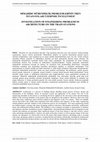
INTERNATIONAL ACADEMIC RESEARCH CONGRESS (INES 2016), 2016
ÖZET: Mimarlık, bir yapı tasarlama sürecidir. Yapı tasarlama sürecinin içine yapı tasarımı, fonks... more ÖZET: Mimarlık, bir yapı tasarlama sürecidir. Yapı tasarlama sürecinin içine yapı tasarımı, fonksiyonelliği, uygulanması, taşıyıcı sistemi girmektedir. Mühendislik disiplini ise tasarımı tamamlanan projede taşıyıcı sistemin hesaplanması, onun uygulayıcıya en uygun şekilde detaylandırılması işini esas alır. Ancak yirminci yüzyıldan itibaren mimarlar ve mühendisler arasında çok fazla anlaşmazlık durumu ortaya çıkmıştır. Bu anlaşmazlık durumlarının temelinde birden fazla sebep yatmaktadır. Bu sebeplerden bir kısmı mimarın kontrolünde olurken; bazı kısımları da mühendisten kaynaklanmaktadır. Yapılan çalışmada; mimarideki mühendislik sorunlarının kaynağı ele alınmış, bu sorunların nasıl çözümlendiği aktarılmıştır. Çalışmada belirlenen sorunların tren istasyonları üzerinden incelemeleri yapılmış ve çözümleri sunulmuştur. Tren istasyonlarının en önemli özelliği çok farklı tasarımsal ve statik hesap sorunlarını bünyesinde barındırmasıdır. Mimaride mühendislik problemleri olarak beş temel problem incelenmiştir. Bu problemler; açıklık geçmek, konsol çıkmak, fonksiyon ve yoğunluk, mimari formlar ve mimari teknik detaylar olarak belirlenmiştir. Sorun öncelikli olarak mimar ve mühendisin beklentisine göre değerlendirilmiş, sonra yapılabilirlik açısından ele alınmıştır. Mimaride mühendislik problemlerinin çözümünde, tren istasyonları üzerinde gerek plan kesit üzerinde gerekse proje görselleri üzerinde incelemeler yapılmıştır. Sonuç olarak mühendis ve mimarlar için yoğun fonksiyon ve hesap gerektiren projeler bile olsa; açıklık geçmek, konsol çıkmak, fonksiyon-yoğunluk ilişkisi, formun seçimi ve mimari teknik detayların çözümlenme problemlerinin disiplinler arası işbirliği ile kolaylıkla aşılabildiği ortaya konmuştur.
ABSTRACT: Architecture is a process of building design. Building design process involves; design and functionality of the buildings, choice of structural system and application of the design. The role of the engineering discipline in this process is calculating the forces applied on the structural system and determining details of the structural elements of the projects that are designed by the architects. However, there have been more than many conflicting issues between architects and engineers in the 21st century. There are multiple reasons that lead to this conflict that originated from both architects and engineers. In this study, engineering related problems and their solutions in the architecture process are investigated. Five main engineering related are studied namely; crossing wide spans, designing cantilever structures, functionality and density, architectural forms and architectural technical details. The problem is first evaluated accordion to expectations of architect and engineers and then considered in terms of applicability. Aforementioned problems that investigated on train stations and solutions are presented. Most significant feature of the train stations is that they involve various static and design related problems. Analyses are made on the plan sections as well as project images of the train stations. In conclusion, it is shown that even for the project that require intensive calculating such as crossing wide spans, designing cantilever structures, creating function and density relationship, deciding the architectural forms and architectural technical details can easily be solved with the collaboration between the two disciplines.
Papers by Muammer Yaman

International Journal of Built Environment and Sustainability, 2025
Crowd management and fire evacuation for assembly buildings are complex design processes in terms... more Crowd management and fire evacuation for assembly buildings are complex design processes in terms of design and construction. It should be designed as the main purpose of the safety of life and property to route the crowd to the nearest exit without creating congestion. This study aims to investigate the effect of exits in sports halls, which can respond to different functions from assembly buildings, for fire evacuation, and crowd management. In evacuation analyses, the effects of existing and alternative exits on the total evacuation time are investigated through Pathfinder evacuation simulations. For this purpose, a typical college sports hall was considered and possible exits were evaluated. Single and double blocking of exits in scenarios that may occur at different points were examined and total evacuation times were analyzed. In the study, it was found that spectators create congestion in sports halls (density of more than 3 people/m2) and are decisive in total evacuation time. It was determined that an exit at a distance from the spectator area could not provide an effective evacuation. Exits close to the spectator area were found to be effective in reducing the total evacuation time and could reduce the total evacuation time by 30 seconds. In conclusion, it is emphasized that the number of exits and exit locations in multi-functional sports halls should be made with rational and performance-based analysis. The importance of preventing congestion and positioning the exits to direct the crowd in an effective fire evacuation and crowd management is explained.

Journal of Architectural/Planning Research and Studies, 2025
Fires in educational buildings cause great loss of life and property, but also negatively affect ... more Fires in educational buildings cause great loss of life and property, but also negatively affect the spiritual and psychological development of students. It is necessary to minimize fire risks and create safe learning environments. For this purpose, national and international fire safety regulations and guidelines play a crucial role. Moreover, with the advance of technological capabilities, buildings should be analyzed using performancebased fire safety precautions and safe evacuation conditions must be thoroughly assessed. This study aims to provide recommendations for a fire-safe educational environment by determining the effectiveness of the relevant classroom arrangements and other precautions in educational buildings. The effects of classroom arrangements on students’ evacuation conditions were investigated using a simulation program (Pathfinder) and the results were evaluated through comparative analyses. Classroom arrangements were investigated using four different formats: Traditional rows and columns arrangement, Cluster arrangement, U-shaped arrangement, and Stadium arrangement. The effects of classroom layout on fire evacuation time are discussed by considering a secondary school building located in Türkiye. In the assessment, the total evacuation time of the class(es), the escape door flow rate (pers/s), and the number of occupants staying in the room depending on the time were evaluated. As a result of the study, it was determined that the fastest evacuation time was the Traditional rows and columns arrangement. In addition, suggestions are presented for the removal of congestion during fire evacuation in different classroom arrangements. Fire safety should be transferred to architectural design and spatial organization as an important component in creating a safe learning environment in educational buildings.
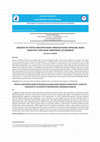
Pamukkale University Journal of Social Sciences Institute, 2024
Noise, the effects of which are revealed later in the occupational health, causes many problems f... more Noise, the effects of which are revealed later in the occupational health, causes many problems for workers. This paper aims to analyze the results of exposure measurements in a textile factory and to provide a holistic assessment of the noise sensitivity and annoyance. In the case study, noise exposure levels in a textile factory were measured according to ISO 9612:2009. Additionally, a face-to-face structured noise annoyance questionnaire and the Weinstein Noise Sensitivity Scale (WNSS) were applied to workers. The findings were analyzed and evaluated with statistical methods. High levels of noise exposure were measured in the spinning and weaving units of the case study, with levels of 88,5-92,3 dBA. Workers identified fibers and powders (67,1%) and noise (58,9%) as crucial parameters affecting indoor comfort levels. A positive and significant relationship was also found between the WNSS Total Score and the noise annoyance levels of the workers (p<0,05). It has been determined that there are high levels of indoor noise in textile factories, which are a representation of working environments. In conclusion, it is necessary to increase noise awareness among workers and to reduce indoor noise level through effective engineering and administrative control precautions.
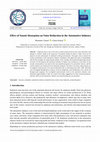
Journal of Advanced Research in Natural and Applied Sciences, 2024
Industrial noise is one of the most common physical factors that cause annoyance and damage to wo... more Industrial noise is one of the most common physical factors that cause annoyance and damage to workers' health in the long term. Precautions should be taken to reduce noise and to improve acoustic performance in industrial working environments. This paper aims to analyze the acoustic performance of the automotive industry contributes to the global outcomes of sustainability and develop strategies for improving the quality of the working environment through improvement scenarios. For this purpose, the automotive industry in Türkiye was examined as a case study. In-situ acoustic measurements were made in the seat manufacturing unit of an automotive factory, and the current situation was transferred to the simulation program. The effects of acoustic improvements on A-weighted sound pressure level and reverberation time at mid-frequencies (500, 1000, 2000 Hz) were investigated through three scenarios. In the investigations, noise distributions were carried out through noise mapping. The A-weighted sound pressure levels in the automotive industry were reduced by approximately 15 dB. As a result of the study, suggestions for noise control precautions and their effects on the automotive industry seat manufacturing unit are presented.

Noise & Vibration Worldwide, 2024
With the developing technology and mechanization, the number of industrial facilities has increas... more With the developing technology and mechanization, the number of industrial facilities has increased. It is important for the worker’s physical and mental health to be in suitable working conditions. This paper analyses the regulations applied in the examination and evaluation of the acoustic environment in industrial facilities. The European Parliament and Council Directive, the United States, Singapore, Canada, Australia, Mexico, Japan, and WHO principles were analysed in detail. Simultaneously, analyses were conducted on the auditory perception of the workers in industrial facilities. As a result of the study, 85, 87, and 90 dBA noise exposure levels were determined for 8 h in different regulations examined. It has been determined that the regulative systems for the auditory perception of the workers in industrial facilities are insufficient. It was found necessary to develop regulation systems for evaluating noise exposure levels and the auditory perception of the workers together. It is important for the occupational health and safety of workers to develop a holistic approach in the update and revision of international regulation and to evaluate the control mechanisms within this scope. The protection of mental and physical health of the workers is presented as the most fundamental requirement. Moreover, it should be ensured that the noise control measures that can be taken (at the source, at the transmission path, and at the receiver) are formed by reducing the noise exposure and increasing the auditory perception of the workers in a positive view.
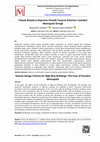
Journal of Architectural Sciences and Applications, 2024
Çalışmada, depremin yüksek yapılar üzerindeki etkileri araştırılmış, bu etkilerin yüksek bina tar... more Çalışmada, depremin yüksek yapılar üzerindeki etkileri araştırılmış, bu etkilerin yüksek bina tarafından sönümlenmesini destekleyen tasarım ilkeleri üzerinde durulmuştur. Yüksek binalarda deprem dayanımını belirleyen ilkeler temel, strüktürel, mimari parametreler ve sismik yalıtım parametreleri olarak sınıflandırılmış, detaylı araştırmaları yapılmıştır. Alan çalışmasında, aktif fay hatları üzerinde bulunan İstanbul’daki yüksek binalarda incelemeler yapılmıştır. Ölçüt örnekleme yöntemi ile İstanbul kentindeki on beş yüksek bina belirlenmiştir. İstanbul’daki yüksek bina örnekleri üzerinden iz sürme ve gözlem yöntemiyle binaların nitel özelliği olarak depreme dayanıklılık esasları ortaya konulmuştur. Çalışmada nitel veriler sonrası yüzdelik derecelendirmelere aktarılarak nicel veriler elde edilmiştir. Çalışmanın sonucunda, yüksek binaların deprem yükleri altında yeterli dayanım göstermesinde etkili olan parametrelerin uygulanmasına yönelik değerlendirmeler yapılmıştır. Teknolojik gelişmeler ve yüksek dayanımlı beton kullanımı gibi deprem dayanımını güçlendiren etmenlerin ve etkili strüktürel ve mimari sistem tasarımlarının, incelenen İstanbul yüksek binalarında kullanıldığı ve uygulandığı tespit edilmiştir. Performansa dayalı sismik tasarım yöntemlerinin teknoloji ile geliştirilmesinin ve deprem mimarlığı alanının yaygınlaştırılmasının önemi açıklanmıştır. ABSTRACT: In this paper, the effects of the earthquake on high-rise buildings were investigated. The principles that determine earthquake resistance in high-rise buildings are classified as basic, structural, architectural parameters and seismic isolation parameters. In the case study, high-rise buildings in Istanbul, located on active fault lines, were investigated. With the criterion sampling method, fifteen high-rise buildings in the city of Istanbul were determined. The principles of earthquake resistance as a qualitative property of the buildings have been revealed with the method of tracing and observation on the samples in İstanbul metropolis. Quantitative data were obtained by transferring the qualitative data to the percentage ratings. In conclusion, evaluations were made for the application of parameters that are effective in the sufficient strength of high-rise buildings under earthquake loads. It has been determined that factors that increased earthquake resistance, such as technological developments and the use of high-performance concrete, and effective structural and architectural systems are used and constructed in the İstanbul high-rise buildings examined. Moreover, the importance of developing performance-based seismic design methods with technology and expanding the field of earthquake architecture has been demonstrated.

GRID Architecture Planning and Design Journal, 2023
The media facades that provide an interactive communication structure for urban users have emerge... more The media facades that provide an interactive communication structure for urban users have emerged in the modern period, and the use of these facades has become common. This paper aims to determine the parameters that will affect the process of designing media facades and discover how design-related parameters are distributed in the practices of designing these media facades. For the evaluation process, 14 sample facades that are universally representative and serve different functions in buildings located in Turkey and other countries (control group) were selected. Analyzing these facades is important to reveal the digitalization level and detailed know-how in this regard. Data were compared using the charts for the media facade formations reviewed through observation method. Examining the parameters regarding the designs of media facades through the comparative analysis method plays a key role in predicting the development of media facades in Turkey. According to the comparison results, the media facades in Turkey were not able to catch up with the recent developments. It was observed that the diversification of the use purposes of media facades and the differentiation of the parameters for design were insufficient. As a result, it is thought that the designers and practitioners will be guided by the results obtained through the examples of the media facades.
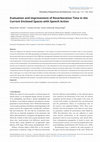
Periodica Polytechnica Architecture, 2022
There are subjective and objective acoustic parameters in the creation of acoustic performance fo... more There are subjective and objective acoustic parameters in the creation of acoustic performance for speech action in room acoustics. Control of reverberation time affecting subjective and objective acoustic parameters is a main parameter in room acoustics. In this study, the acoustic performance assessment of the TOBB Twins Headquarters Reception Hall, which is current enclosed space with square plan and flat floor, has been performed as a case study. The evaluation focused on the relationship between reverberation time and interior surface absorption. Primarily, the reverberation time was determined according to the international standard with in-situ measurements in the current enclosed space. The reverberation time of the space was found over the reference value range. Models have been developed with the use of materials to reduce the reverberation time. In the assessment of room acoustics parameters, reverberation times of the models developed using Ecotect v.5.20 and Odeon 14.00 simulation programs have been determined. The model in which the optimum reverberation time for the speech action was obtained was constructed. After the construction, reverberation time measurements have been made again. As a result of the study, the effect of surface absorptions on the improvement of reverberation time in the enclosed spaces with square plan and flat floor for speech action has been evaluated. Suggestions have been developed to control the reflective and absorption properties of all surfaces in accordance with the evaluation and improvement of reverberation time.
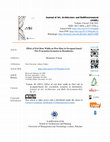
Journal of Art, Architecture and BuiltEnvironment (JAABE), 2021
Student dormitories are intensely used buildings that meet the resting, accommodation and living ... more Student dormitories are intensely used buildings that meet the resting, accommodation and living needs of students. It is necessary to ensure the safety of students and to eliminate possible risks in dormitories as intensive use areas. Fires pose a great risk in dormitories and may cause serious casualties and injuries. The reduction of casualties and injuries can be achieved by analyzing occupant behaviour during fires according to the building use scenarios. In this paper, a type of dormitory that provides two alternative exits is explored. The building use scenarios of the dormitory were investigated by making on-site observations. Students’ use of sleeping units, dining units and partial sleeping/dining units and fire exit routes were determined. Pathfinder computer program was used to analyze the fire evacuation performance. This program was defined in accordance with occupant behaviour and different fire evacuation times were suggested depending on the building use scenarios. At the end of the study, based on the evacuation times, the flow rate at the exit doors according to the location of the occupants was analyzed. In the fire escape routes, as the upper floors are reached from the lower floors, the occupant flow rate decreases at the exit doors and the flow rates continue to be stable as the number of occupants is saturated according to the door width. The decrease in the number of occupants in the dining unit decreases the flow rate at the exit doors. It is important that various assembly units in dormitories, such as the dining unit, are designed on floors that can directly provide evacuation to a safe area. The results obtained are suitable for all dormitories, residences, hotels and other similar buildings.

Tasarım + Kuram, 2021
Dormitory buildings are accommodation buildings where students meet their learning, living and re... more Dormitory buildings are accommodation buildings where students meet their learning, living and resting needs. In order for the students in the dormitory buildings to continue their social and physical activities, it is important to provide the safety of life and property. Beds, cabinets, study units, books, etc. in the dormitory buildings increase the indoor fire load and this situation poses a great threat to the occupants during a possible fire. Elimination of threats and reduction of risks is achieved through the design of buildings with active and passive fire safety precautions.
Fire regulations are shaped according to past fire experiences and are organized as prescriptive approaches and performancebased approaches. In our country, there is Turkey’s Regulation on Fire Protection, TRFP which came into force in 2002 and has survived until today through various revisions. It is clearly stated that the rules contained in the regulation are binding and that their provisions are decisive, except for the qualified building groups (where there are not sufficient provisions in the regulation, in metro, marina, helipad, tunnel, stadium, airport and similar areas of use). In this case, the TRFP which was prepared with a prescriptive approach, limits the use, adoption, and dissemination of performance-based approaches at a certain level. It is important to present the requirements of the TRFP, and to compare the requirements with performance-based approaches in establishing fire safety precautions in dormitory buildings. It is necessary to construct and analyse occupantbased evacuation scenarios, which form the basis of performance-based approaches in dormitory buildings. In addition, it is important to analyse the congestions and crowded masses with all components and to control the fire safety designs.
In this paper, case study was carried out to implement the regulation requirements and to control the evacuation times of occupant-based evacuation scenarios. The dormitory building chosen as a case study has been extensively examined in accordance with the TRFP. In the examinations, compliance analyses were made within the scope of passive fire safety precautions and the design requirements of escape routes were emphasized. The evacuation possibilities of the dormitory building were designed on the architectural project and occupant load calculations throughout the building, and escape routes were defined, and controls were made. In addition, the evacuation scenarios based on the occupant of the dormitory buildings the situation of the students in the sleeping units and the dining hall- and the fire evacuation process were analysed with a computer simulation program (Pathfinder). The number and capacity of escape routes on the case dormitory building were comparatively analyse according to TRFP, and computer simulation program. Evacuation conditions for dormitory buildings were evaluated based on compliance with the regulation and total evacuation times. It has been concluded that the TRFP, should be supported with performance-based solutions in order to eliminate possible risks within the framework of dormitory buildings.
As a result of the case study, it has been determined that there are only problems regarding the opening direction of the doors and narrowing the escape route within the framework of the TRFP. In occupant-based evacuation scenarios, especially when any of the alternative exit points are blocked (Scenarios A1 and B1), the total evacuation times are considerably longer than the usual evacuation times. This situation revealed that a serious problem may be encountered in the dormitory building fire and that fire risk scenarios in dormitory buildings should be investigated. The TRFP controls the escape numbers and capacities as a prescriptive regulation. However, in the case of the dormitory building, while complying with the regulation in general, serious problems arise especially when the students are asleep and any of the alternative exits are blocked. Building-specific and performance-based approaches need to be developed in solving and eliminating fire safety problems and risks.
As a result of the study, as the future of the countries, students should be provided with the most appropriate conditions to live, accommodation and rest. As the most basic requirement in dormitory buildings, the safety of life and property of students should be provided. It is necessary to update the fire regulations of the country by considering them in this framework, to create performance-based, occupant-based fire safety precautions specific to the architectural project and to provide appropriate evacuation conditions. It is expected that solutions will be produced for all risks that can be defined within the scope of the projects and that risks and threats will be eliminated in this context. Dormitory building fires are a life safety issue that cannot be underestimated; in this context, solutions should be developed.










Uploads
Conference Presentations by Muammer Yaman
The soundscape is defined as the sound environment that is perceived, experienced and understood by users. This approach aims to analyze the sounds that make up the perceived sound environment and determine their effect on the environment users through subjective/objective methods. Urban soundscape examines the sounds of the city to mark time, space and memory and observes sounds as part of the physical phenomenon of the city. Threshold zones, which emerge while analyzing the changing soundscapes of the city, constitute a major part of the urban soundscape. In this context, the paper focuses on analyzing and evaluating the soundscape prevailing in different parts of the city.In this paper, the soundscape study was carried out in the Ilkadım and Atakum in Samsun and the OMU - Fine Arts Campus areas, which can be considered as the threshold zone of these districts. The current sound pressure levels were measured in the cross-sectional area and a structured questionnaire was conducted to obtain the information of soundmark and their satisfaction. As a result, the similarities and differences between sound pressure levels, the soundmarks, sound environment quality and sound environment satisfaction in the cross-sectional area were revealed through the concept of threshold zone.
ABSTRACT: As a result of energy crisis, the use of photovoltaic systems in architecture has increased for production of energy. In architecture, photovoltaic systems are used as roof and facade components in building shell. The construction of roof and facade components with photovoltaic systems, which is a major factor in the emergence and spread of fire, holds the possibility of a risk in terms of fire safety precautions. For this reason, in the fire safety risk assessment of the photovoltaic systems used in architecture, it is necessary to know the combustibility class of the materials, to construct the roof and facade system components appropriately, to analyze the internal and external connection and to keep under the control electrical equipment within the system. In this study, fire safety precautions of photovoltaic systems used in roof and facade components in architecture have been investigated. In the framework of the study, national and international regulations have been considered and evaluated. Proposals have been made for fire safety precautions of photovoltaic systems used in architecture for designers and practitioners.
büyük ölçekli test standardının içeriği ve uluslararası alandaki yeri açıklanarak performansa dayalı cephe yangın güvenlik önlemlerinin gerekliliğine dikkat çekilmiştir.
ABSTRACT As a result of energy crisis; within the scope of conservation of energy in buildings, renewable energy sources is greatly needed. The sun, which is one of the sources of renewable energy, is used through the use of photovoltaic panels for energy production in buildings. The use of photovoltaic panels on building facades has become increasingly common. Fire safety precautions in the use of photovoltaic panels is an important criterion. In this study; it is mentioned that photovoltaic panels to be used in buildings facades bring fire load to the buildings and fire safety precautions that can be taken on this regard are emphasized. In our country, photovoltaic panels to be used on building facades have been evaluated in terms of regulation, design and material within the scope of fire safety and proposals have been made for the use of photovoltaic panels.
ABSTRACT: In our country, there is so much loss of life and property due to fires occurring in buildings for various reasons. To minimize loss of life and property that may occur, buildings should be harmonized with the national fire regulations, fire safety in buildings must be provided. Security measures to be applied should be created at the project design stage and projects should be developed in accordance. For this purpose, new Faculty of Architecture Building of Gazi University which is in the design stage was examined in terms of national fire regulations for rules and an eligibility criteria was developed based on the evaluations. The recommendations developed out of this study and the design project were brought in compliance with building regulations.
ABSTRACT: Today, developments in the fields of production, materials and technology are affecting the needs of people. It is inevitable to create places that will stand up to the changing social and economic circles and integrate the developing technology with the design. In this context, expected user demands and performance conditions are increased. 'Kinetic architecture' has gained importance as an area of current development that will fulfill user demands by providing expected performance conditions. Offices that have commercial activities and where users spend most of their time. In this context, the possibility of using kinetic architectural elements in the context of functional flexibility in office buildings has been researched. The aim of the work is to provide data for designers for future office designs using functional flexibility, physical environmental control, visual conversion, etc. in the 'office' function of the kinetics building. Principle designs have been made in the context of the use of kinetic systems in selected office plans. First, kinetic systems are classified according to the type of movement, location, and the purpose of movement. The principles and designs have been put forward in order to provide flexibility beyond the bark. The positive aspects of using kinetic building elements are ; the availability of spatial utilization, the ability to adjust the heating-cooling costs depending on this flexibility, the efficient utilization of daylight, the different variations in the mass geometry. Negatively; maintenance costs, high initial investment costs, the inability to incorporate design later, the problems of isolation against rain and snow, and the contradiction of kinetic movements of today's development. In spite of the constraints, utilization of kinetic architectural elements in architectural design and structural technologies is seen as an important change for the future in terms of producing new stylistic compositions with kinetic building design and providing functional flexibility.
ABSTRACT: The glass as an architectural element from the past to the present there have been major advances in the use of. Together with the developing construction industry, glass, has made great progress both building materials and construction systems in the field. Today's high-tech investigated the quality of the glass, the use of different structural solutions has emerged. In this context, the selection of the criteria too much in formed architectural glass, glass selection in accordance with the user profile has been expected to fulfill the important requirements of comfort. Architects in the design process of project, design while deciding on the performance criteria expected from the glass fully they should know; they should be able to produce solutions in this context. In this study, the performance criteria relating to the use of glass as a building material is expected from are presented, current solution are transferred to. A literature search is performed and the quality of the static resistance of the glass, the quality of construction, installation and modification, the quality of temperature control, the quality of water-tightness and moisture control, the quality of acoustic comfort, the quality of fire safety, the quality of expansion and horizontal load effects, the quality of light, reflection and color, the quality of cleanliness and maintenance are investigated. Glass appropriate glass performance criteria within the scope of the architectural project as a result of the election in the realization of the expected qualities identified. The use of glass in design and implementation of projects and recommendations developed in the glass about the selection of specific parameters to be used. The use of architectural glass in a failure to identify the performance criteria that is not fully understood it is an important mission for some physical comfort conditions and architectural designers to disrupt. In this case, during the design phase the project should pay attention to proper glass selection, and in practice the architect in accordance with the recommendations in the selection of glass should be used.
ABSTRACT: Architecture is a process of building design. Building design process involves; design and functionality of the buildings, choice of structural system and application of the design. The role of the engineering discipline in this process is calculating the forces applied on the structural system and determining details of the structural elements of the projects that are designed by the architects. However, there have been more than many conflicting issues between architects and engineers in the 21st century. There are multiple reasons that lead to this conflict that originated from both architects and engineers. In this study, engineering related problems and their solutions in the architecture process are investigated. Five main engineering related are studied namely; crossing wide spans, designing cantilever structures, functionality and density, architectural forms and architectural technical details. The problem is first evaluated accordion to expectations of architect and engineers and then considered in terms of applicability. Aforementioned problems that investigated on train stations and solutions are presented. Most significant feature of the train stations is that they involve various static and design related problems. Analyses are made on the plan sections as well as project images of the train stations. In conclusion, it is shown that even for the project that require intensive calculating such as crossing wide spans, designing cantilever structures, creating function and density relationship, deciding the architectural forms and architectural technical details can easily be solved with the collaboration between the two disciplines.
Papers by Muammer Yaman
Fire regulations are shaped according to past fire experiences and are organized as prescriptive approaches and performancebased approaches. In our country, there is Turkey’s Regulation on Fire Protection, TRFP which came into force in 2002 and has survived until today through various revisions. It is clearly stated that the rules contained in the regulation are binding and that their provisions are decisive, except for the qualified building groups (where there are not sufficient provisions in the regulation, in metro, marina, helipad, tunnel, stadium, airport and similar areas of use). In this case, the TRFP which was prepared with a prescriptive approach, limits the use, adoption, and dissemination of performance-based approaches at a certain level. It is important to present the requirements of the TRFP, and to compare the requirements with performance-based approaches in establishing fire safety precautions in dormitory buildings. It is necessary to construct and analyse occupantbased evacuation scenarios, which form the basis of performance-based approaches in dormitory buildings. In addition, it is important to analyse the congestions and crowded masses with all components and to control the fire safety designs.
In this paper, case study was carried out to implement the regulation requirements and to control the evacuation times of occupant-based evacuation scenarios. The dormitory building chosen as a case study has been extensively examined in accordance with the TRFP. In the examinations, compliance analyses were made within the scope of passive fire safety precautions and the design requirements of escape routes were emphasized. The evacuation possibilities of the dormitory building were designed on the architectural project and occupant load calculations throughout the building, and escape routes were defined, and controls were made. In addition, the evacuation scenarios based on the occupant of the dormitory buildings the situation of the students in the sleeping units and the dining hall- and the fire evacuation process were analysed with a computer simulation program (Pathfinder). The number and capacity of escape routes on the case dormitory building were comparatively analyse according to TRFP, and computer simulation program. Evacuation conditions for dormitory buildings were evaluated based on compliance with the regulation and total evacuation times. It has been concluded that the TRFP, should be supported with performance-based solutions in order to eliminate possible risks within the framework of dormitory buildings.
As a result of the case study, it has been determined that there are only problems regarding the opening direction of the doors and narrowing the escape route within the framework of the TRFP. In occupant-based evacuation scenarios, especially when any of the alternative exit points are blocked (Scenarios A1 and B1), the total evacuation times are considerably longer than the usual evacuation times. This situation revealed that a serious problem may be encountered in the dormitory building fire and that fire risk scenarios in dormitory buildings should be investigated. The TRFP controls the escape numbers and capacities as a prescriptive regulation. However, in the case of the dormitory building, while complying with the regulation in general, serious problems arise especially when the students are asleep and any of the alternative exits are blocked. Building-specific and performance-based approaches need to be developed in solving and eliminating fire safety problems and risks.
As a result of the study, as the future of the countries, students should be provided with the most appropriate conditions to live, accommodation and rest. As the most basic requirement in dormitory buildings, the safety of life and property of students should be provided. It is necessary to update the fire regulations of the country by considering them in this framework, to create performance-based, occupant-based fire safety precautions specific to the architectural project and to provide appropriate evacuation conditions. It is expected that solutions will be produced for all risks that can be defined within the scope of the projects and that risks and threats will be eliminated in this context. Dormitory building fires are a life safety issue that cannot be underestimated; in this context, solutions should be developed.
The soundscape is defined as the sound environment that is perceived, experienced and understood by users. This approach aims to analyze the sounds that make up the perceived sound environment and determine their effect on the environment users through subjective/objective methods. Urban soundscape examines the sounds of the city to mark time, space and memory and observes sounds as part of the physical phenomenon of the city. Threshold zones, which emerge while analyzing the changing soundscapes of the city, constitute a major part of the urban soundscape. In this context, the paper focuses on analyzing and evaluating the soundscape prevailing in different parts of the city.In this paper, the soundscape study was carried out in the Ilkadım and Atakum in Samsun and the OMU - Fine Arts Campus areas, which can be considered as the threshold zone of these districts. The current sound pressure levels were measured in the cross-sectional area and a structured questionnaire was conducted to obtain the information of soundmark and their satisfaction. As a result, the similarities and differences between sound pressure levels, the soundmarks, sound environment quality and sound environment satisfaction in the cross-sectional area were revealed through the concept of threshold zone.
ABSTRACT: As a result of energy crisis, the use of photovoltaic systems in architecture has increased for production of energy. In architecture, photovoltaic systems are used as roof and facade components in building shell. The construction of roof and facade components with photovoltaic systems, which is a major factor in the emergence and spread of fire, holds the possibility of a risk in terms of fire safety precautions. For this reason, in the fire safety risk assessment of the photovoltaic systems used in architecture, it is necessary to know the combustibility class of the materials, to construct the roof and facade system components appropriately, to analyze the internal and external connection and to keep under the control electrical equipment within the system. In this study, fire safety precautions of photovoltaic systems used in roof and facade components in architecture have been investigated. In the framework of the study, national and international regulations have been considered and evaluated. Proposals have been made for fire safety precautions of photovoltaic systems used in architecture for designers and practitioners.
büyük ölçekli test standardının içeriği ve uluslararası alandaki yeri açıklanarak performansa dayalı cephe yangın güvenlik önlemlerinin gerekliliğine dikkat çekilmiştir.
ABSTRACT As a result of energy crisis; within the scope of conservation of energy in buildings, renewable energy sources is greatly needed. The sun, which is one of the sources of renewable energy, is used through the use of photovoltaic panels for energy production in buildings. The use of photovoltaic panels on building facades has become increasingly common. Fire safety precautions in the use of photovoltaic panels is an important criterion. In this study; it is mentioned that photovoltaic panels to be used in buildings facades bring fire load to the buildings and fire safety precautions that can be taken on this regard are emphasized. In our country, photovoltaic panels to be used on building facades have been evaluated in terms of regulation, design and material within the scope of fire safety and proposals have been made for the use of photovoltaic panels.
ABSTRACT: In our country, there is so much loss of life and property due to fires occurring in buildings for various reasons. To minimize loss of life and property that may occur, buildings should be harmonized with the national fire regulations, fire safety in buildings must be provided. Security measures to be applied should be created at the project design stage and projects should be developed in accordance. For this purpose, new Faculty of Architecture Building of Gazi University which is in the design stage was examined in terms of national fire regulations for rules and an eligibility criteria was developed based on the evaluations. The recommendations developed out of this study and the design project were brought in compliance with building regulations.
ABSTRACT: Today, developments in the fields of production, materials and technology are affecting the needs of people. It is inevitable to create places that will stand up to the changing social and economic circles and integrate the developing technology with the design. In this context, expected user demands and performance conditions are increased. 'Kinetic architecture' has gained importance as an area of current development that will fulfill user demands by providing expected performance conditions. Offices that have commercial activities and where users spend most of their time. In this context, the possibility of using kinetic architectural elements in the context of functional flexibility in office buildings has been researched. The aim of the work is to provide data for designers for future office designs using functional flexibility, physical environmental control, visual conversion, etc. in the 'office' function of the kinetics building. Principle designs have been made in the context of the use of kinetic systems in selected office plans. First, kinetic systems are classified according to the type of movement, location, and the purpose of movement. The principles and designs have been put forward in order to provide flexibility beyond the bark. The positive aspects of using kinetic building elements are ; the availability of spatial utilization, the ability to adjust the heating-cooling costs depending on this flexibility, the efficient utilization of daylight, the different variations in the mass geometry. Negatively; maintenance costs, high initial investment costs, the inability to incorporate design later, the problems of isolation against rain and snow, and the contradiction of kinetic movements of today's development. In spite of the constraints, utilization of kinetic architectural elements in architectural design and structural technologies is seen as an important change for the future in terms of producing new stylistic compositions with kinetic building design and providing functional flexibility.
ABSTRACT: The glass as an architectural element from the past to the present there have been major advances in the use of. Together with the developing construction industry, glass, has made great progress both building materials and construction systems in the field. Today's high-tech investigated the quality of the glass, the use of different structural solutions has emerged. In this context, the selection of the criteria too much in formed architectural glass, glass selection in accordance with the user profile has been expected to fulfill the important requirements of comfort. Architects in the design process of project, design while deciding on the performance criteria expected from the glass fully they should know; they should be able to produce solutions in this context. In this study, the performance criteria relating to the use of glass as a building material is expected from are presented, current solution are transferred to. A literature search is performed and the quality of the static resistance of the glass, the quality of construction, installation and modification, the quality of temperature control, the quality of water-tightness and moisture control, the quality of acoustic comfort, the quality of fire safety, the quality of expansion and horizontal load effects, the quality of light, reflection and color, the quality of cleanliness and maintenance are investigated. Glass appropriate glass performance criteria within the scope of the architectural project as a result of the election in the realization of the expected qualities identified. The use of glass in design and implementation of projects and recommendations developed in the glass about the selection of specific parameters to be used. The use of architectural glass in a failure to identify the performance criteria that is not fully understood it is an important mission for some physical comfort conditions and architectural designers to disrupt. In this case, during the design phase the project should pay attention to proper glass selection, and in practice the architect in accordance with the recommendations in the selection of glass should be used.
ABSTRACT: Architecture is a process of building design. Building design process involves; design and functionality of the buildings, choice of structural system and application of the design. The role of the engineering discipline in this process is calculating the forces applied on the structural system and determining details of the structural elements of the projects that are designed by the architects. However, there have been more than many conflicting issues between architects and engineers in the 21st century. There are multiple reasons that lead to this conflict that originated from both architects and engineers. In this study, engineering related problems and their solutions in the architecture process are investigated. Five main engineering related are studied namely; crossing wide spans, designing cantilever structures, functionality and density, architectural forms and architectural technical details. The problem is first evaluated accordion to expectations of architect and engineers and then considered in terms of applicability. Aforementioned problems that investigated on train stations and solutions are presented. Most significant feature of the train stations is that they involve various static and design related problems. Analyses are made on the plan sections as well as project images of the train stations. In conclusion, it is shown that even for the project that require intensive calculating such as crossing wide spans, designing cantilever structures, creating function and density relationship, deciding the architectural forms and architectural technical details can easily be solved with the collaboration between the two disciplines.
Fire regulations are shaped according to past fire experiences and are organized as prescriptive approaches and performancebased approaches. In our country, there is Turkey’s Regulation on Fire Protection, TRFP which came into force in 2002 and has survived until today through various revisions. It is clearly stated that the rules contained in the regulation are binding and that their provisions are decisive, except for the qualified building groups (where there are not sufficient provisions in the regulation, in metro, marina, helipad, tunnel, stadium, airport and similar areas of use). In this case, the TRFP which was prepared with a prescriptive approach, limits the use, adoption, and dissemination of performance-based approaches at a certain level. It is important to present the requirements of the TRFP, and to compare the requirements with performance-based approaches in establishing fire safety precautions in dormitory buildings. It is necessary to construct and analyse occupantbased evacuation scenarios, which form the basis of performance-based approaches in dormitory buildings. In addition, it is important to analyse the congestions and crowded masses with all components and to control the fire safety designs.
In this paper, case study was carried out to implement the regulation requirements and to control the evacuation times of occupant-based evacuation scenarios. The dormitory building chosen as a case study has been extensively examined in accordance with the TRFP. In the examinations, compliance analyses were made within the scope of passive fire safety precautions and the design requirements of escape routes were emphasized. The evacuation possibilities of the dormitory building were designed on the architectural project and occupant load calculations throughout the building, and escape routes were defined, and controls were made. In addition, the evacuation scenarios based on the occupant of the dormitory buildings the situation of the students in the sleeping units and the dining hall- and the fire evacuation process were analysed with a computer simulation program (Pathfinder). The number and capacity of escape routes on the case dormitory building were comparatively analyse according to TRFP, and computer simulation program. Evacuation conditions for dormitory buildings were evaluated based on compliance with the regulation and total evacuation times. It has been concluded that the TRFP, should be supported with performance-based solutions in order to eliminate possible risks within the framework of dormitory buildings.
As a result of the case study, it has been determined that there are only problems regarding the opening direction of the doors and narrowing the escape route within the framework of the TRFP. In occupant-based evacuation scenarios, especially when any of the alternative exit points are blocked (Scenarios A1 and B1), the total evacuation times are considerably longer than the usual evacuation times. This situation revealed that a serious problem may be encountered in the dormitory building fire and that fire risk scenarios in dormitory buildings should be investigated. The TRFP controls the escape numbers and capacities as a prescriptive regulation. However, in the case of the dormitory building, while complying with the regulation in general, serious problems arise especially when the students are asleep and any of the alternative exits are blocked. Building-specific and performance-based approaches need to be developed in solving and eliminating fire safety problems and risks.
As a result of the study, as the future of the countries, students should be provided with the most appropriate conditions to live, accommodation and rest. As the most basic requirement in dormitory buildings, the safety of life and property of students should be provided. It is necessary to update the fire regulations of the country by considering them in this framework, to create performance-based, occupant-based fire safety precautions specific to the architectural project and to provide appropriate evacuation conditions. It is expected that solutions will be produced for all risks that can be defined within the scope of the projects and that risks and threats will be eliminated in this context. Dormitory building fires are a life safety issue that cannot be underestimated; in this context, solutions should be developed.
ABSTRACT: Traditional architecture is shaped by many factors such as the way of cultural and social life, religious and conceptive administrative of society; in addition to the extensive knowledge and experience from the past inventions related to material, construction and technological possibilities in construction systems have been developed and continued to the present day. When we look at this development chart, the Ottoman Empire, with the influence of the long-term period of power, constitutes the period in which this development can be viewed most easily. Especially the architecture of the mosque contains the structures where this development can be viewed most easily. The classical period, in which the best solutions of the search for central space can be seen, is particularly important in the context of mosque architecture. This period is especially important in the context of technical solutions in buildings as well as construction technology, and contains the most important examples with the methods found and developed by Mimar Sinan. Besides speaking in mosques, the presence of music makes it difficult to establish optimum solutions, especially in the context of acoustic solutions. Within the scope of this study, the construction details and systems that are effective in providing acoustic performance parameters in the Ottoman religious architecture have been examined through two examples, this system and details have been discussed and suggestions have been presented for its availability today.
ABSTRACT: Facade fires pose risks to life and property safety for building users. During the architectural design and construction process, a number of active and passive fire safety precautions are required to be taken in order to take the expected fire safety performance from the facade by reducing the risks. In this context, the article focuses on facade fire dynamics and investigates on the creation of passive fire safety measures on facades. Moreover, the creation of passive fire safety precautions on the facades, researches have been made through the facade materials and details, fire regulations of Turkey (Turkey’s Regulation on Fire Protection, TRFP), United States, United Kingdom, Singapore, New Zealand, United Arab Emirates and Australia for facade fire safety precautions have been discussed. National and international regulations in the creation of facade fire safety precautions have been examined and analysed through facade materials, horizontal fire barriers, facade openings, distance between buildings, external wall resistance and automatic extinguishing systems. As a result of the study, assessments are made to reduce the risk of facade fires and to save the life and property safety of building users for future. Within the framework of the facade fire safety precautions, it has been proposed to use the materials according to the building heights, to detail the facade openings and to use the automatic extinguishing system requirements in our country's fire regulation.